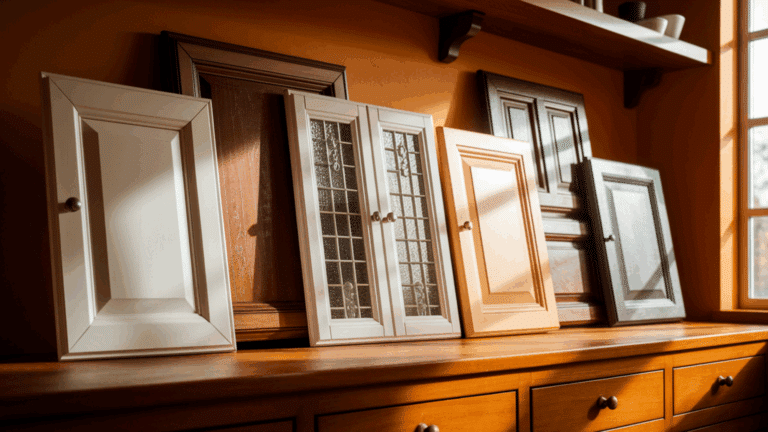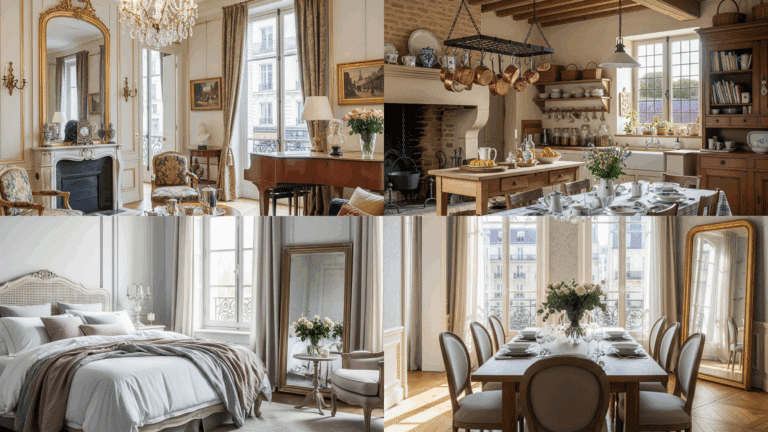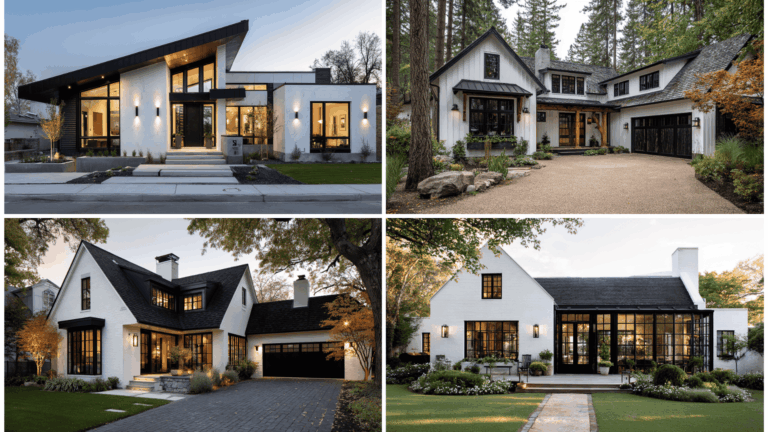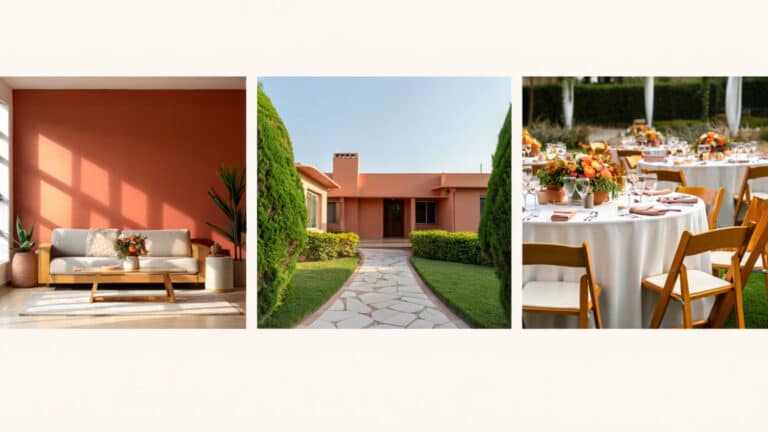21 Unique Rustic Pool Fence Ideas
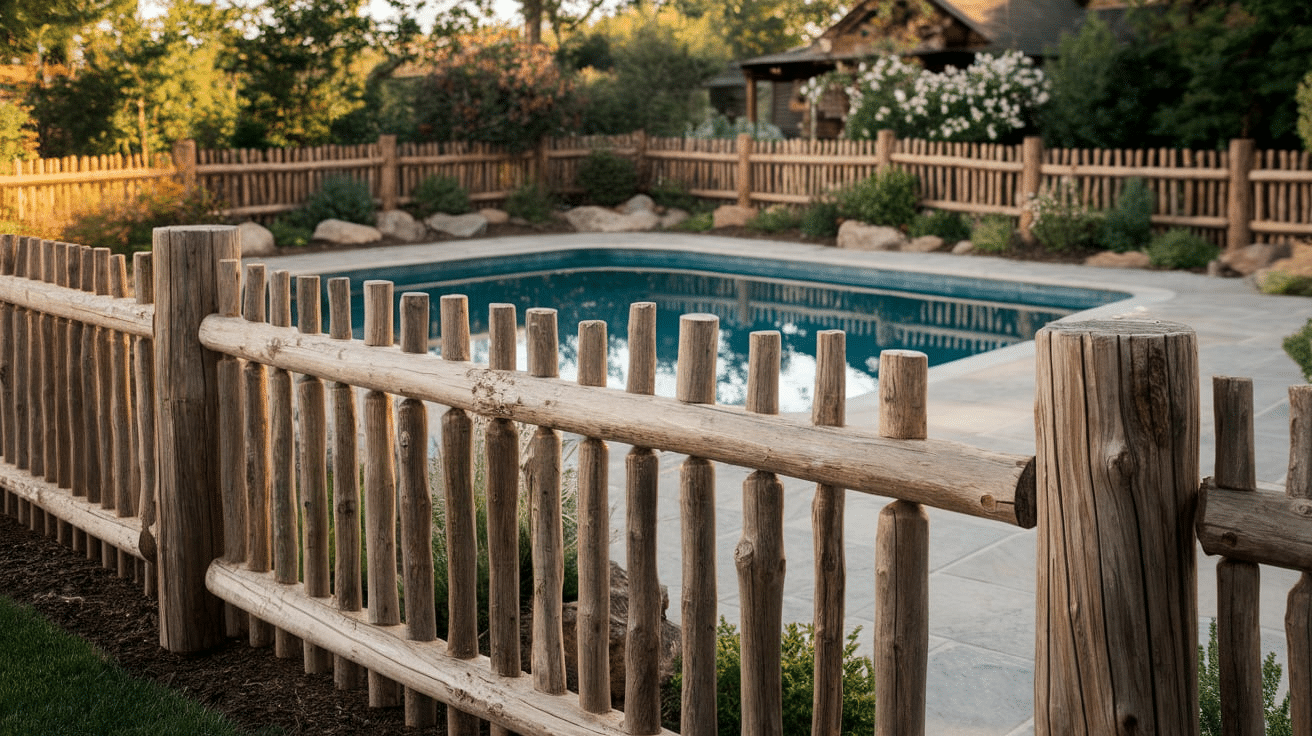
Everyone wants their pool area to look good and stay safe. Pool fences serve two main purposes: They keep kids safe and add charm to your outdoor space.
A plain fence does the job, but why settle for boring when you can have something with character? Rustic pool fences bring warmth and natural beauty to any backyard setting.
Rustic designs use simple materials that blend with nature. Wood, stone, and metal create fences that look both old-fashioned and modern.
This blog shares unique rustic fence ideas that will make your pool area stand out. Each option balances looks and function, giving you choices that work for different yards and budgets.
Why Choose Rustic Pool Fence
Rustic pool fences offer more than just basic safety. They bring a natural charm and character to your yard that standard options can’t match.
These fences blend with trees, gardens, and outdoor spaces, making everything look planned and put-together. Cost matters, too—rustic fences often use common materials like wood and stone that are budget-friendly.
Many homeowners find they can build these fences themselves, saving even more money. Another plus is how these fences age.
Unlike plastic or metal options that look worn out after a few years, rustic fences tend to look better with time. The weather gives wood a nice, worn look that adds to its appeal.
Unique Rustic Pool Fence Ideas
Rustic pool fences come in many styles to match any yard. The best part is that they combine safety with good looks.
These fence ideas range from simple to fancy, with options for every budget.
1. Log Rail Fence
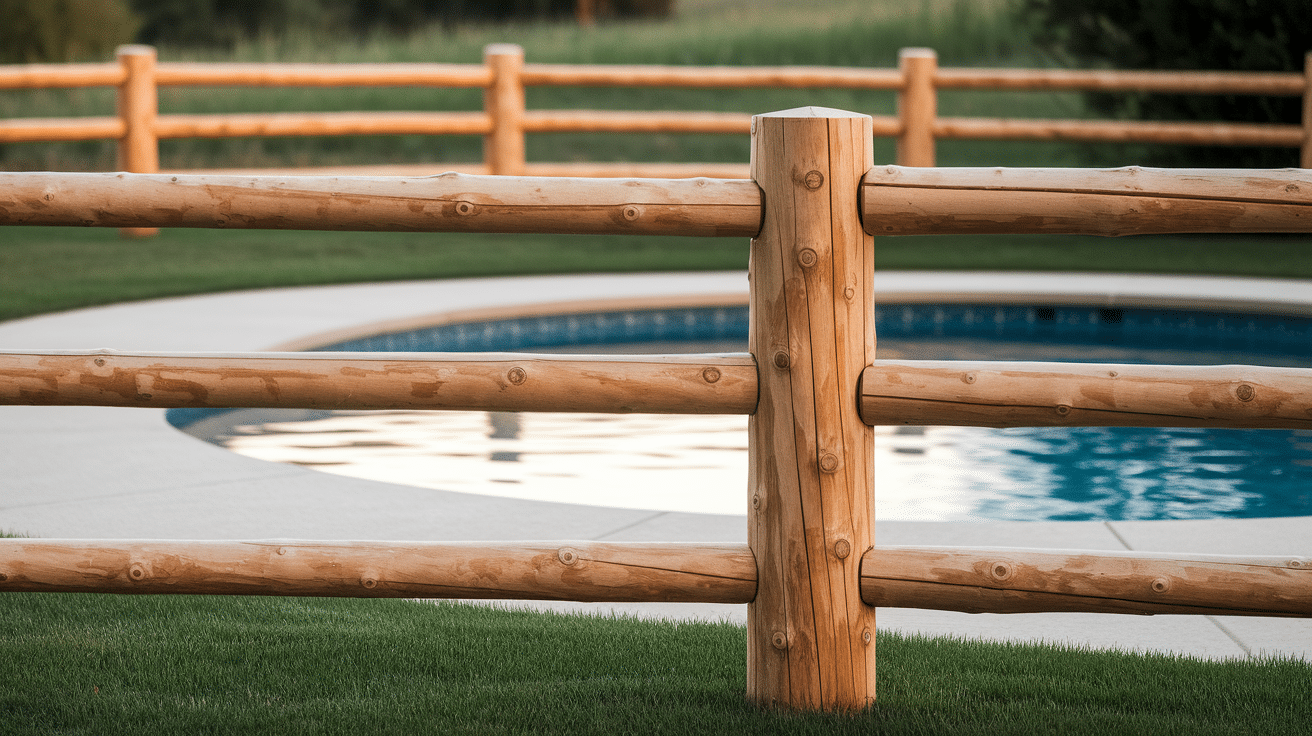
A log rail fence uses round wooden posts with two or three rails running between them. This open design gives your pool area a ranch-like feel while marking it.
It works well when paired with plants for extra privacy. The natural wood turns gray over time unless sealed yearly with a weather-resistant stain.
Budget: $800-1,500 for a small to medium pool area
2. Split Rail Classic
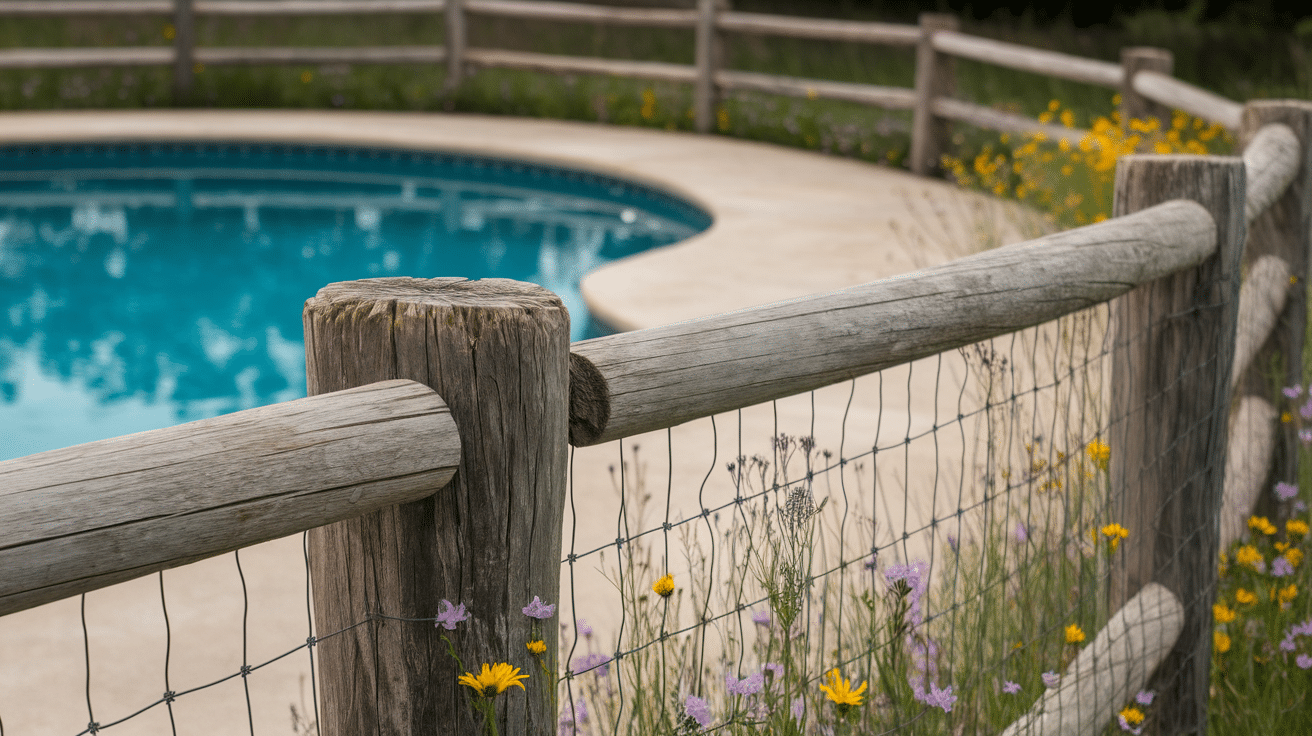
This fence uses rough-cut wooden rails that fit into slots in the posts—no nails are needed! The simple style brings a farm look to your yard. You can add wire mesh for extra safety with small children.
Cedar or locust wood lasts longest for this type of fence and resists bugs naturally.
Budget: $600-1,200 for basic setup
3. Reclaimed Barn Wood
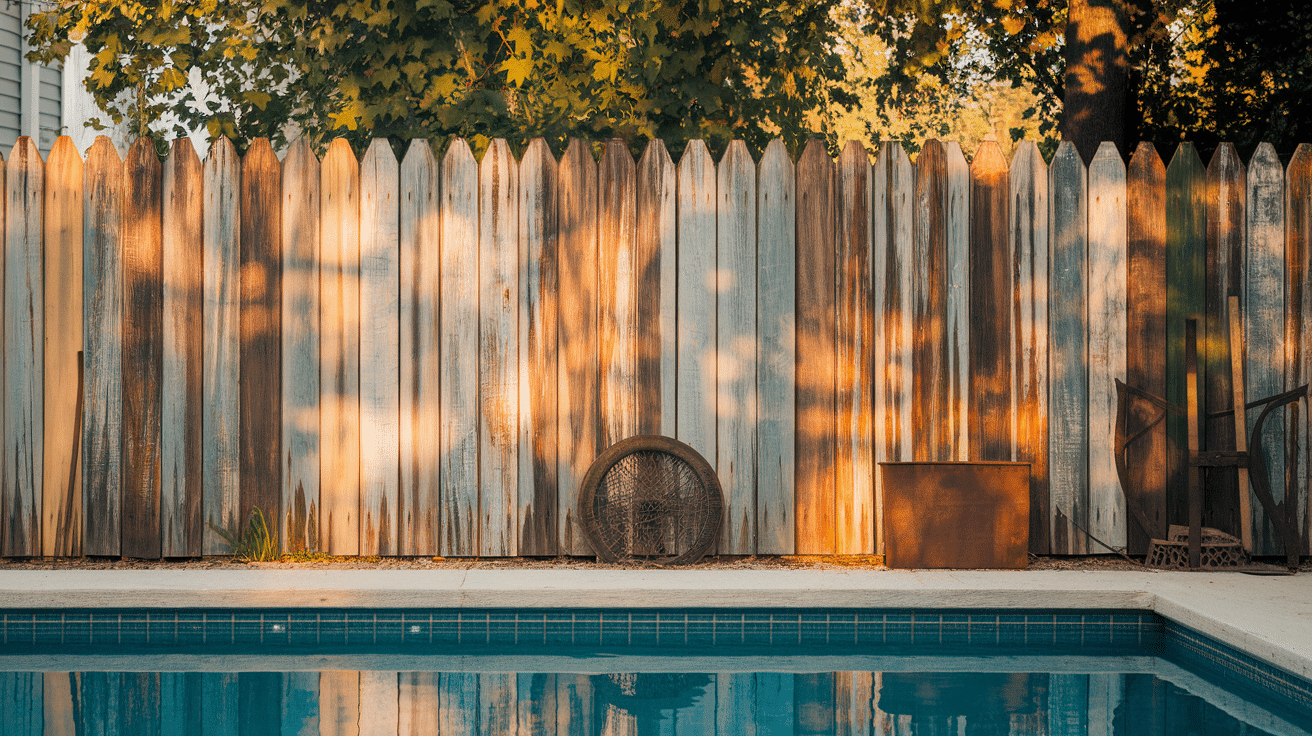
Old barn wood gets new life as a pool fence. Each board has its colors, marks, and story. The weathered look adds charm right away, with no need to wait for aging.
Look for boards that haven’t been treated with harmful chemicals for pool safety and always test for lead paint.
Budget: $1,200-2,500 depending on wood source
4. Stone and Wood Combo

Stone posts hold wooden rails for a mix of hard and soft textures. This combo lasts long and stands up to the weather. It fits well with homes that have both stone and wood elements.
The stone posts won’t rot, making this fence more stable over many years and through harsh seasons.
Budget: $2,000-3,500 for mixed materials
5. Twisted Branch Fence
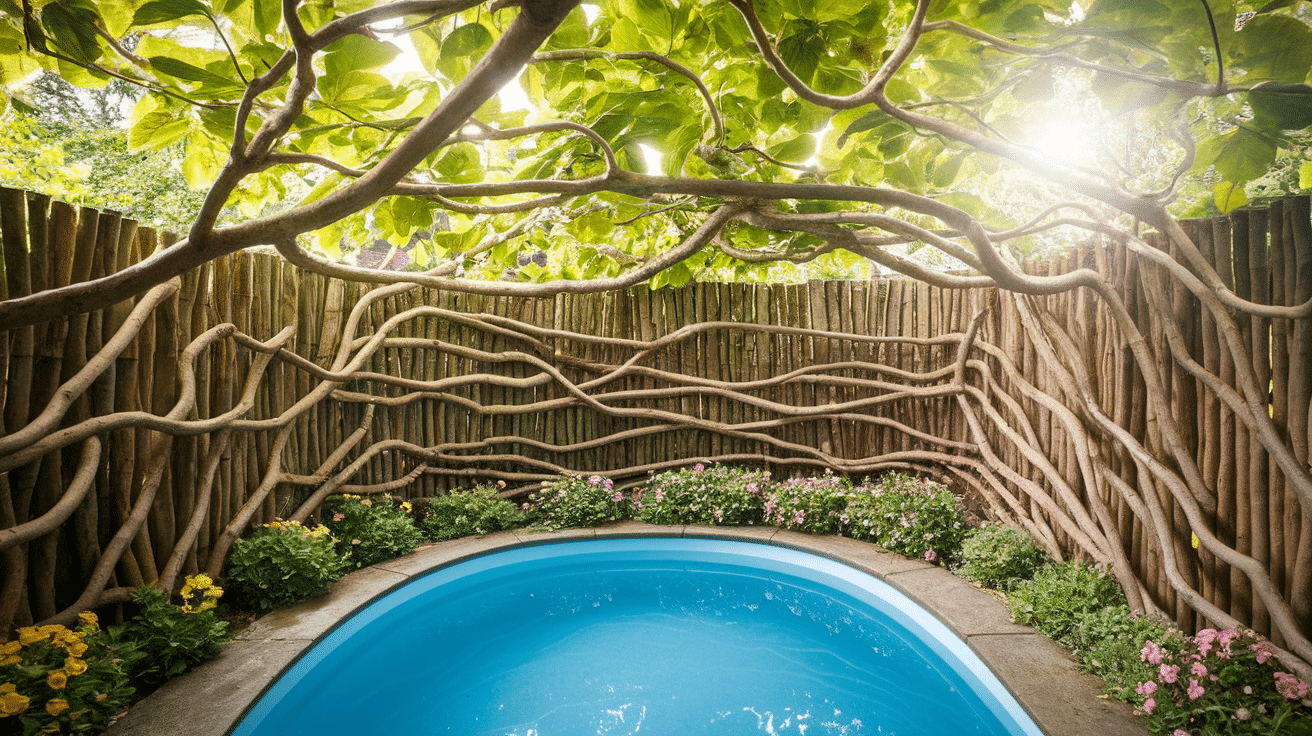
This fence uses branches still in their natural form. The twists and turns create a one-of-a-kind fence that feels like part of the garden.
Works best as a shorter fence or with added safety features. Each section looks different, making a truly unique border that seems to grow from the ground.
Budget: $700-1,400 if you source branches yourself
6. Woven Willow Panels
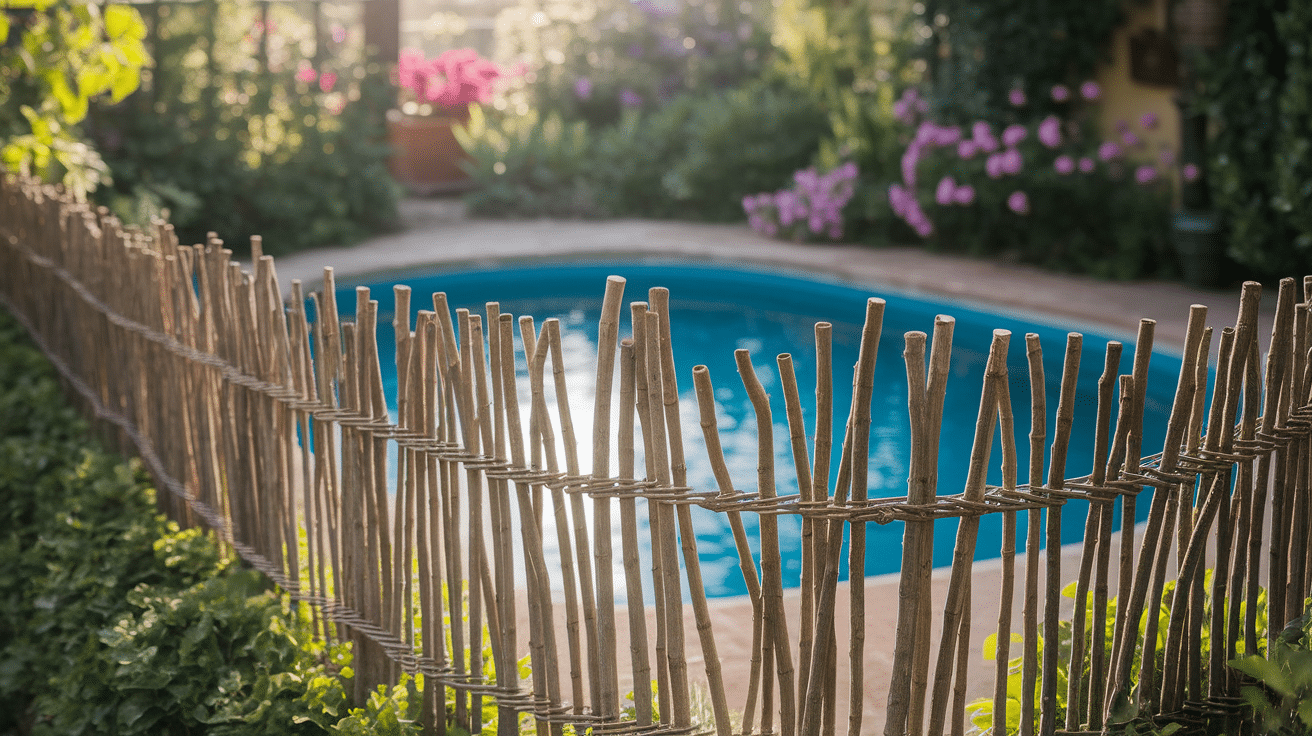
Willow branches woven between posts make a tight-knit fence with a basket-like look. These panels block some views while letting light pass through, giving your pool space a cozy, hidden feel.
Willow needs to be replaced every few years as it breaks down, but it costs little to update.
Budget: $900-1,800 for pre-made panels
7. Rope and Post Design
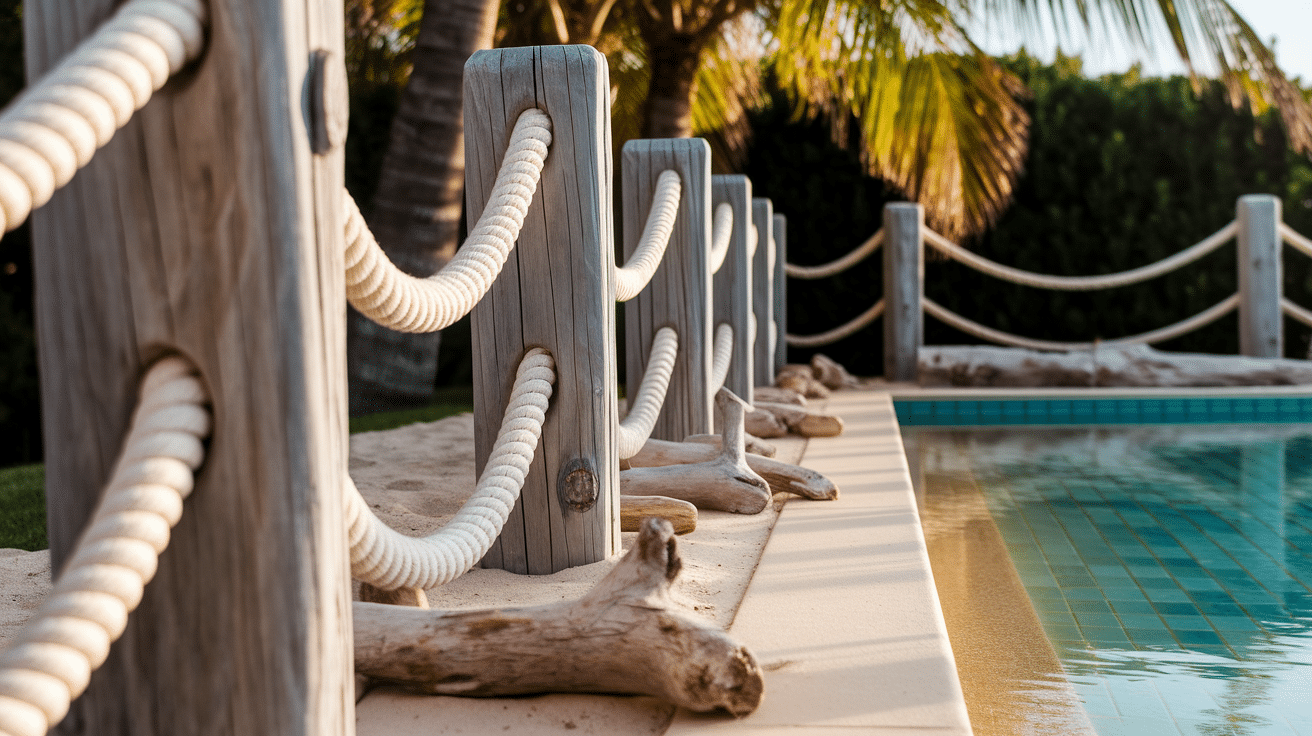
A thick rope threaded through wooden posts makes a simple, beach-style fence. This option works best as a visual marker rather than a safety fence. Add wire mesh for homes with kids.
Marine-grade rope lasts longer in wet pool areas and under sun exposure without fraying or breaking down.
Budget: $500-1,000 for basic materials
8. Pallet Wood Fence
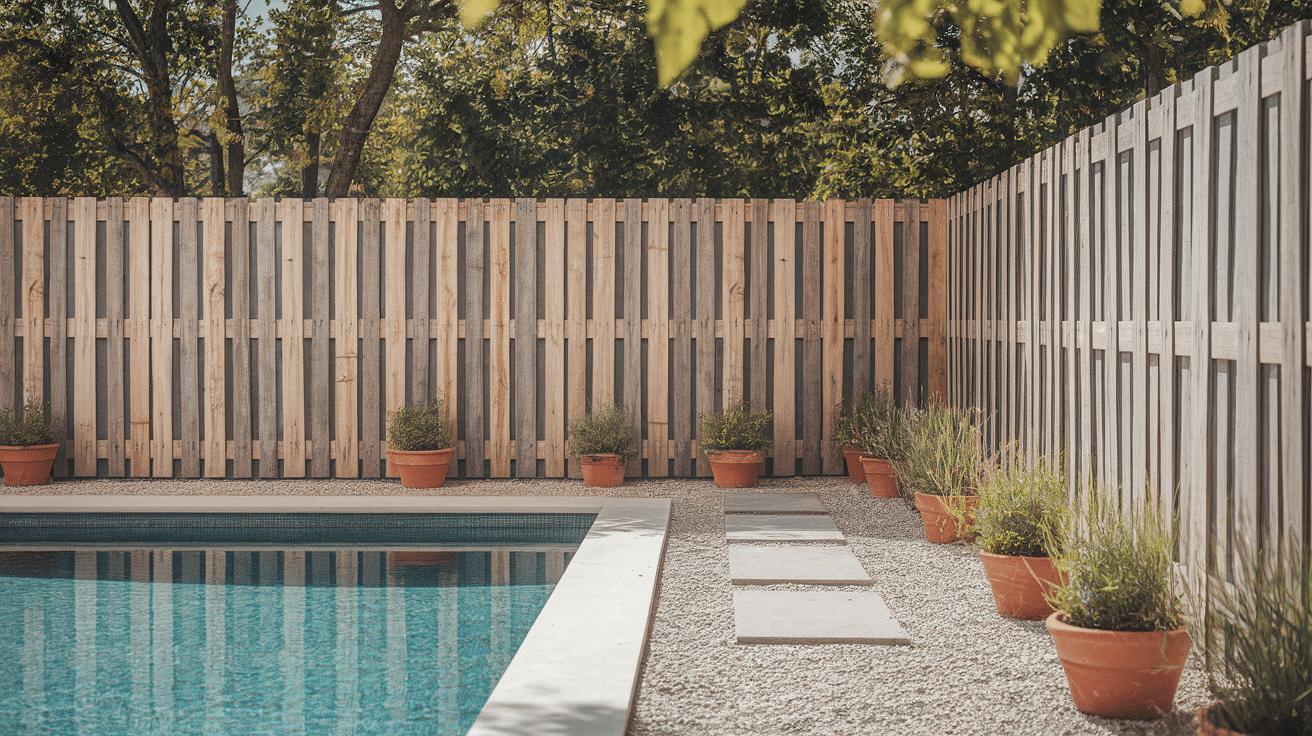
Old shipping pallets can be taken apart and rebuilt as fence panels. This budget-friendly option gives you a wooden fence at a lower cost. Sand the wood well to prevent splinters.
Check for stamps showing that the pallets are heat-treated rather than chemically treated to avoid harmful substances.
Budget: $400-900 if using found pallets
9. Gabion Wall with Wood Top
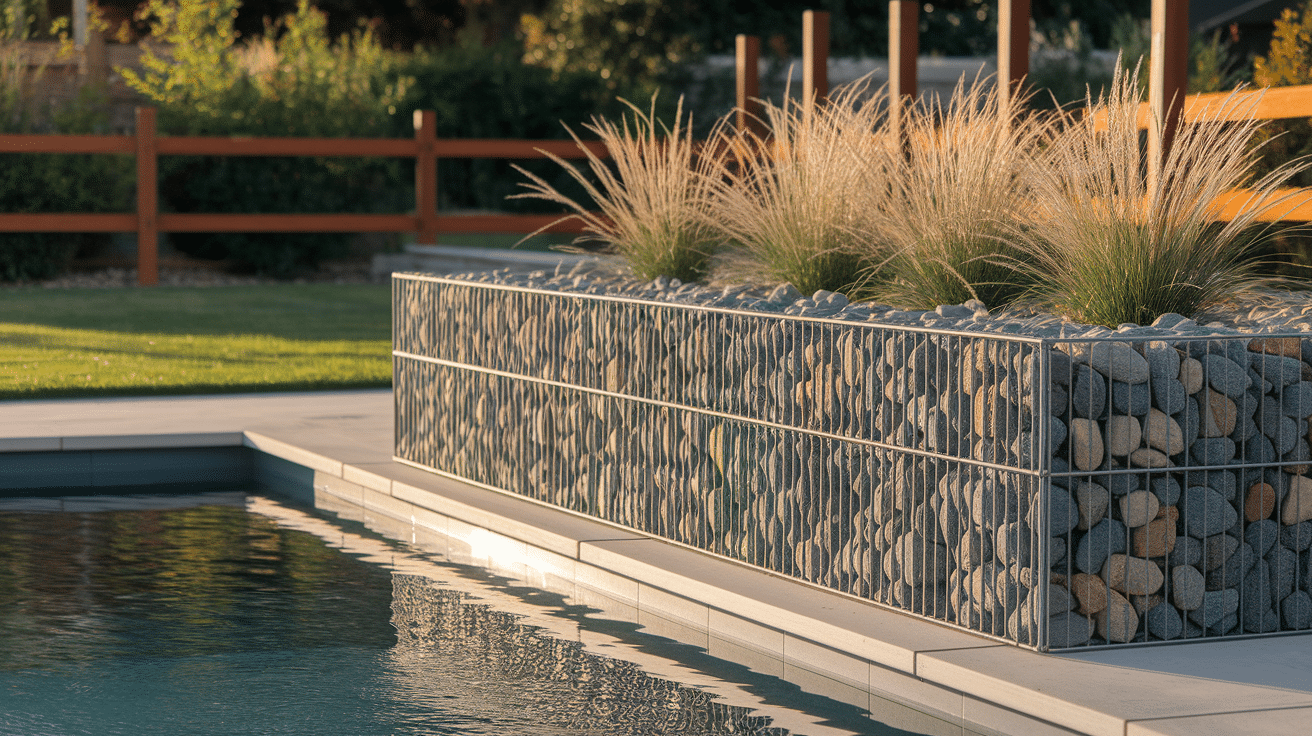
Wire cages filled with stones form the base of this fence. Wooden rails or a flat wooden top finish the look. This combo adds weight and substance to your pool area.
The stones can be picked to match your yard’s color scheme and won’t shift or wash away in rain.
Budget: $2,500-4,000 depending on stone choice
10. Horizontal Plank Style

Wooden boards run side by side between posts, creating a solid wall of wood. Gaps between planks let air and some light pass. This style works well for privacy while still feeling natural.
Different wood widths create a more casual, less perfect look that suits rustic yards best.
Budget: $1,000-2,000 for treated pine
11. Wrought Iron with Wooden Posts
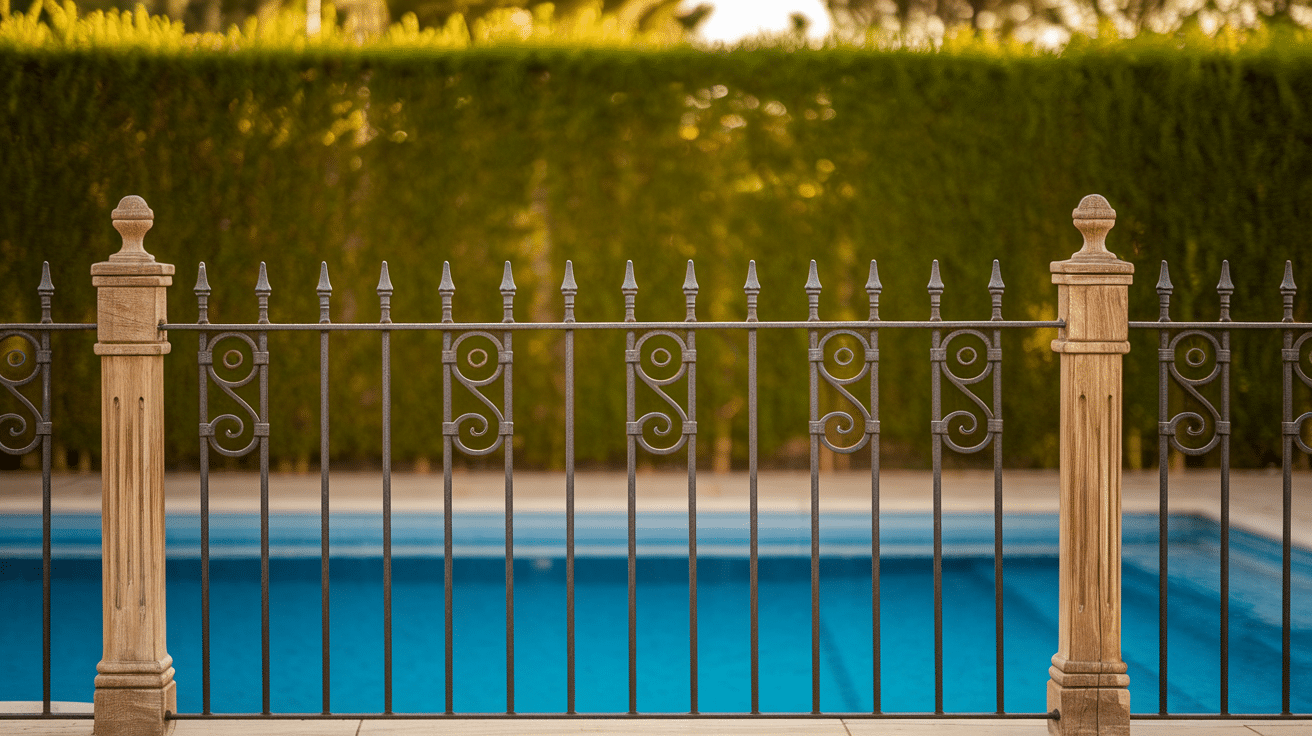
Black iron bars between wooden posts mix old and new styles. The metal parts can have simple or fancy designs. This fence lets you see through while keeping the area safe.
The contrast of black metal against wood looks sharp in most yard settings and offers high security.
Budget: $2,000-3,500 for custom work
12. Live Plant Fence Support
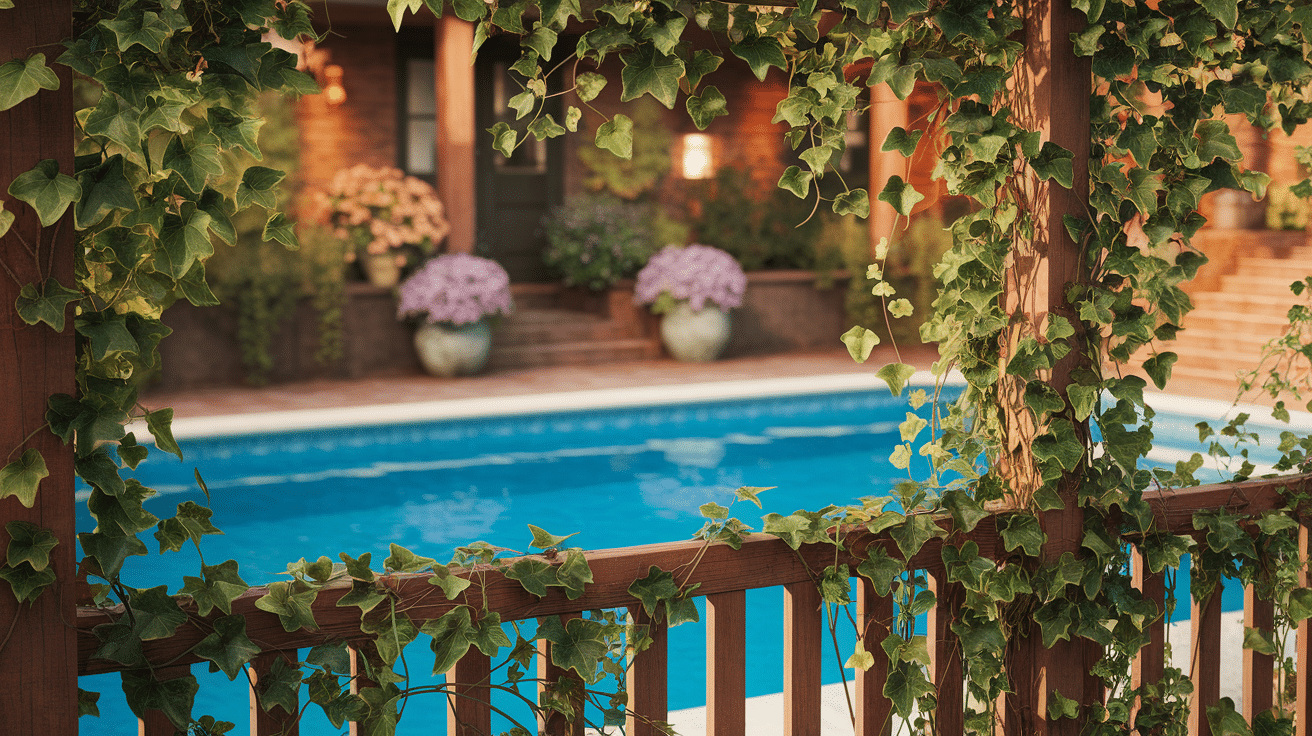
A basic wooden frame supports growing plants that fill in over time. Climbing roses, jasmine, or ivy can turn a simple fence into a living wall. The wood gives structure until plants grow thick.
Water needs increase with this option, but the green wall effect is worth the effort.
Budget: $500-1,200 plus plants
13. Wooden Ladder Sections
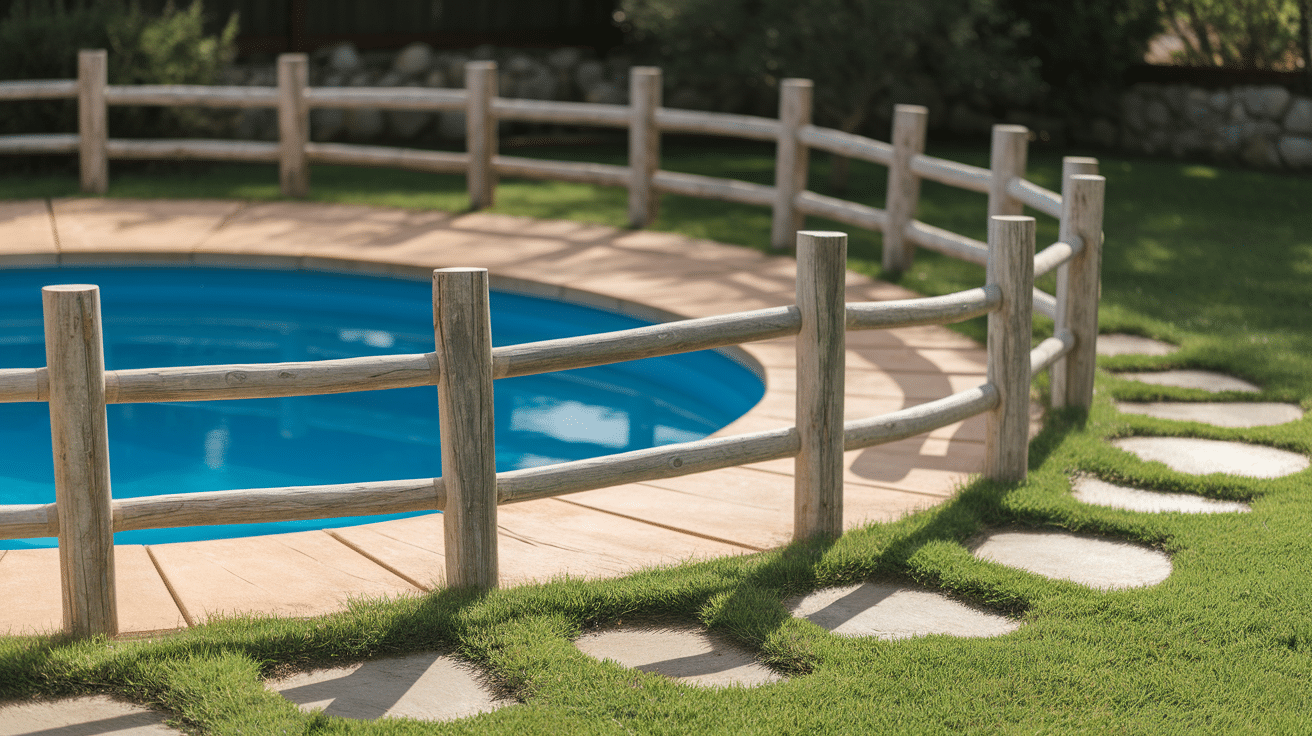
Old wooden ladders or new ladder-like sections create an unusual fence line. Each section has its own character, and the rungs are spaced for safety. This style offers good looks at a lower cost.
Add mesh backing for safety with small children and to meet local pool fence codes.
Budget: $700-1,500 depending on source
14. Tree Trunk Slices
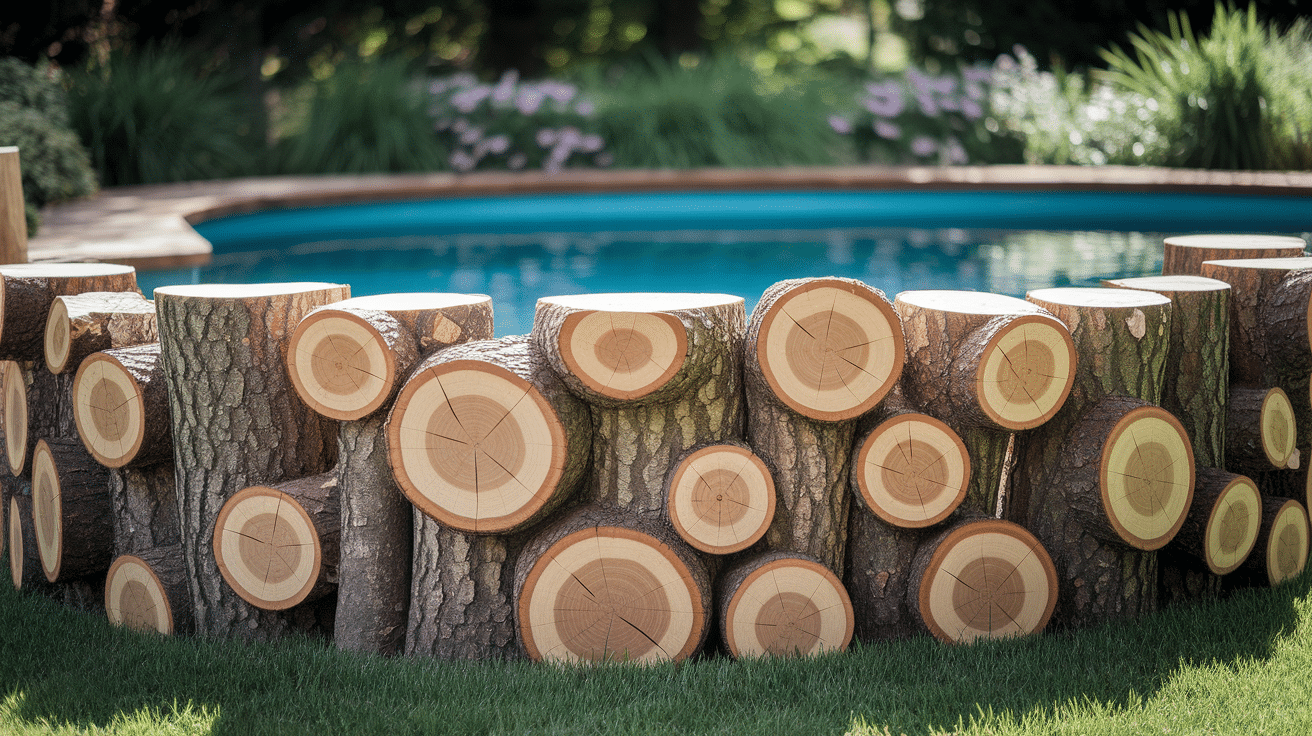
Round cuts from tree trunks, set side by side, create a fence that shows off the wood grain. The circles can be the same size or mixed for style. This fence type stands out from typical designs.
Slices need good sealing to prevent rot in the wet pool area and to stop bugs.
Budget: $1,300-2,600 for prepared slices
15. Wagon Wheel Accents
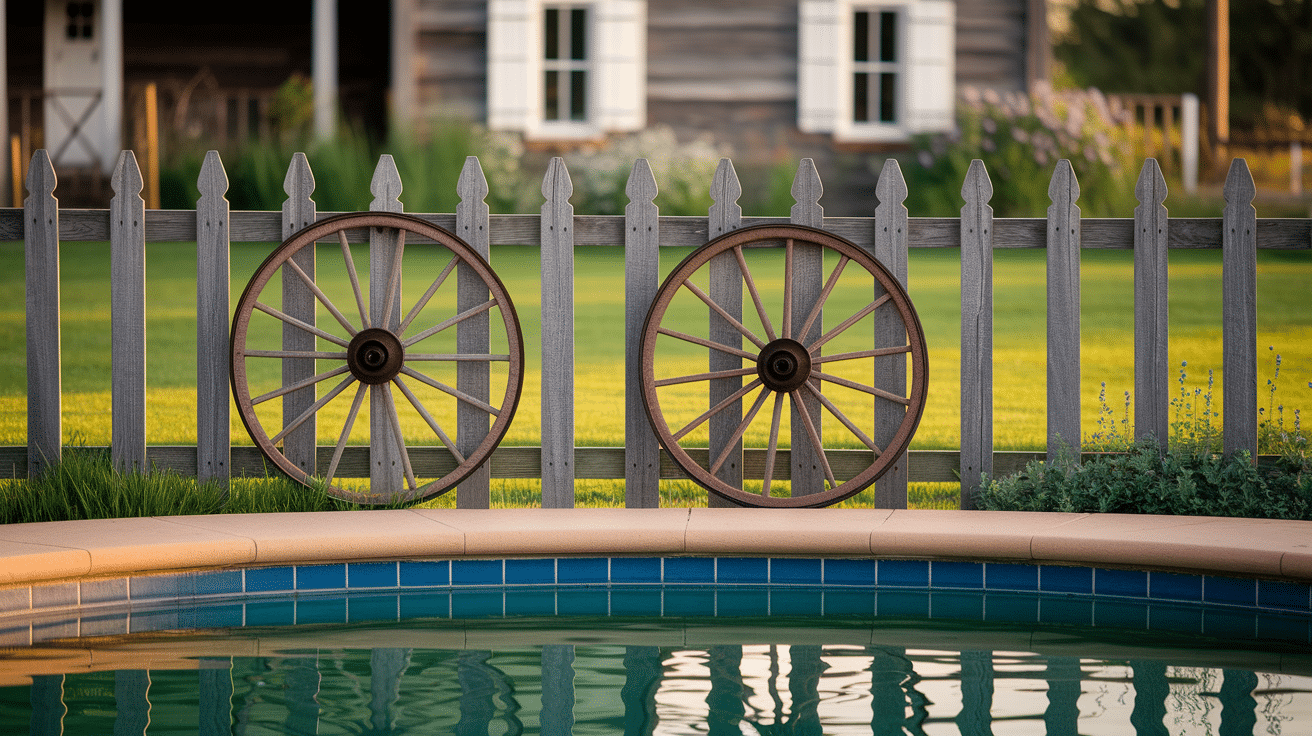
Standard wooden fence sections feature old wagon wheels as decorative pieces. The wheels break up the fence line and add Western charm.
One wheel per section is enough to make a statement. Hunt farm sales for original old wheels or buy new replicas from farm stores.
Budget: $1,000-2,200 plus wheel cost
16. Rock Column and Wood Rail
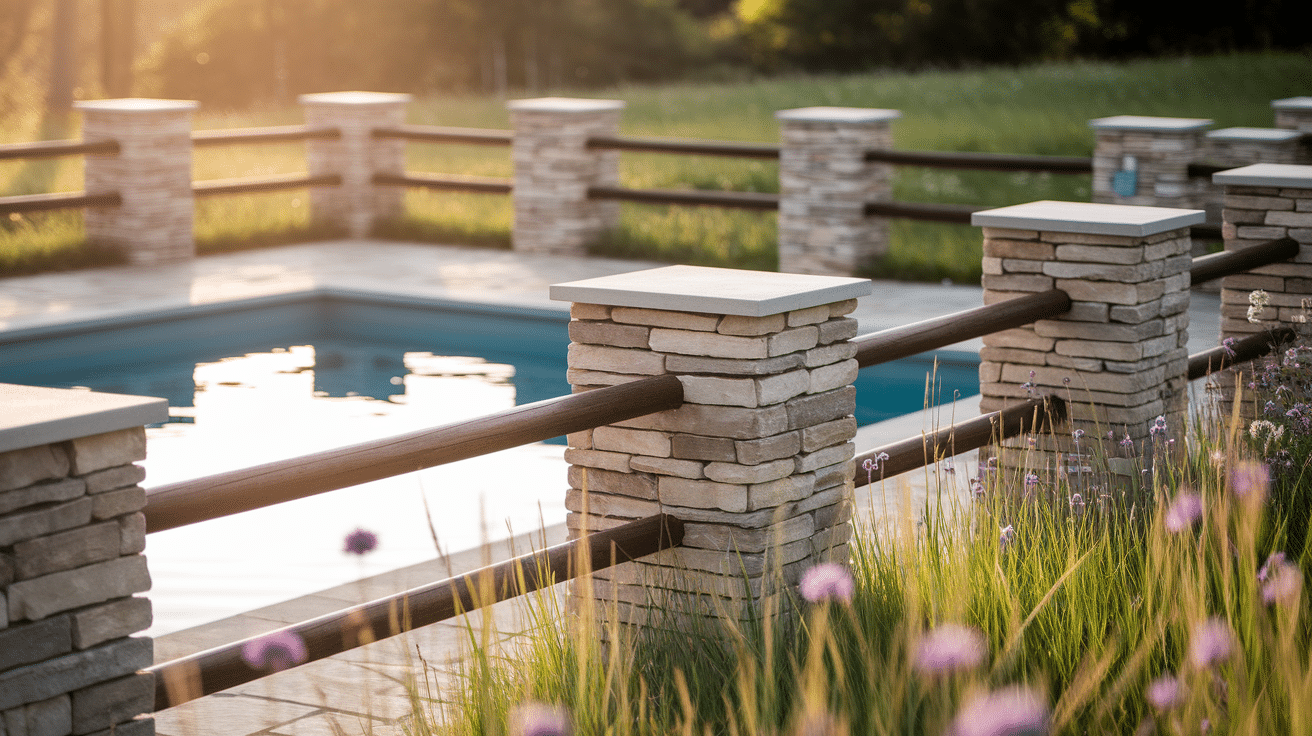
Stacked rock columns hold wooden rails for a solid, lasting fence. The stone can match your home or yard features. This fence stands up to the weather and won’t blow over in storms.
Mortar between rocks makes columns stronger for long-term use in all climate types.
Budget: $2,500-4,500 for stonework
17. Bamboo Panel Fence
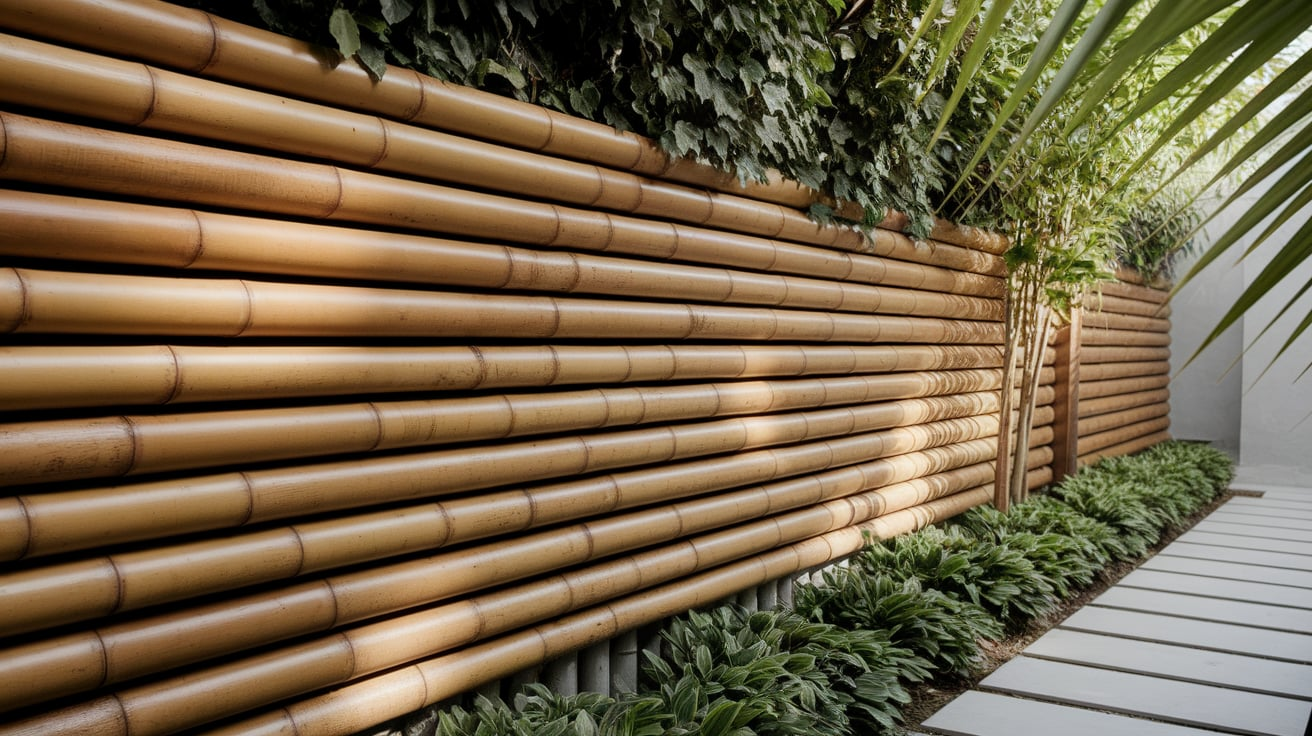
Bamboo poles tied together make panels with a beach or Asian garden feel. The material is strong but brings a lighter look than heavy wood.
Bamboo weathers to a soft gray if not oiled yearly. Choose thick poles for longest life and secure tightly to prevent rattling in the wind.
Budget: $800-1,600 for prepared panels
18. Cedar Shingle Wall
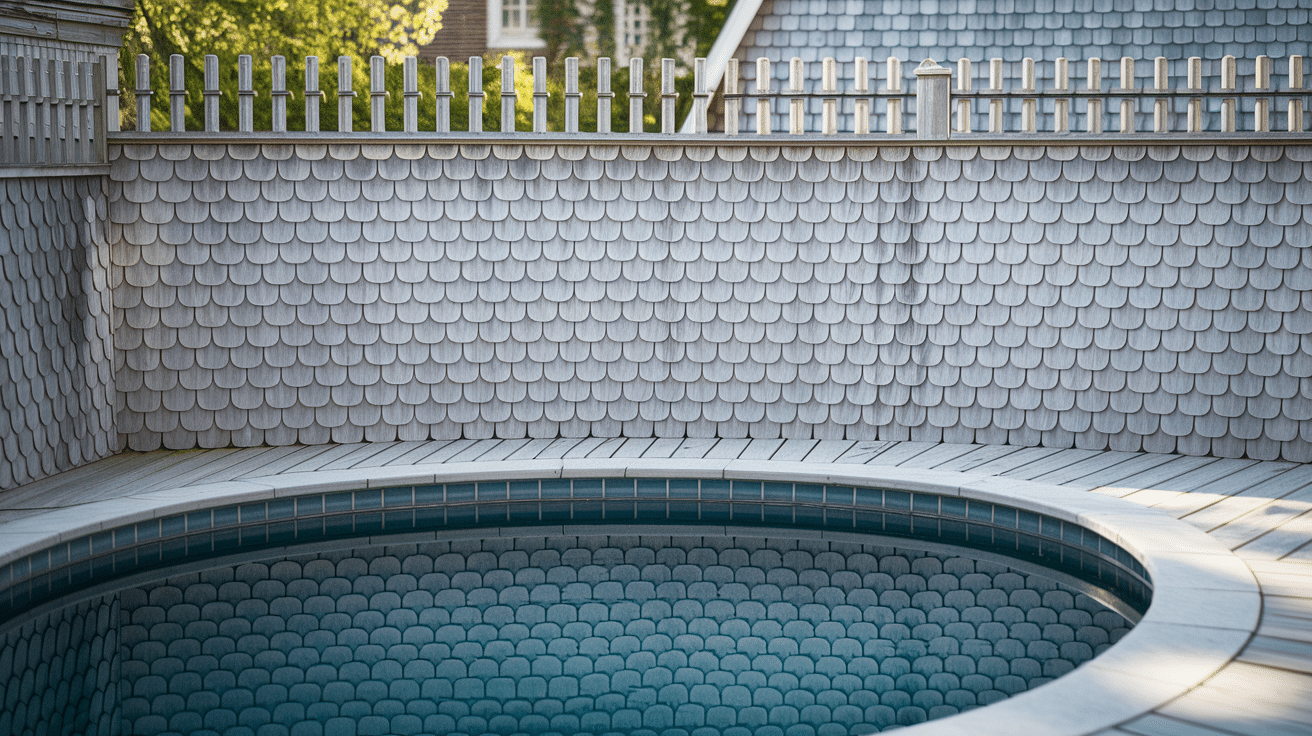
Overlapping cedar shingles on a frame create a textured, fish-scale pattern. This New England style brings charm to any pool area.
The shingles resist water and weather to a soft silver over years. Trim the bottom edge in a wave pattern for extra style points.
Budget: $1,500-3,000 for materials
19. Wooden Frame with Wire Mesh
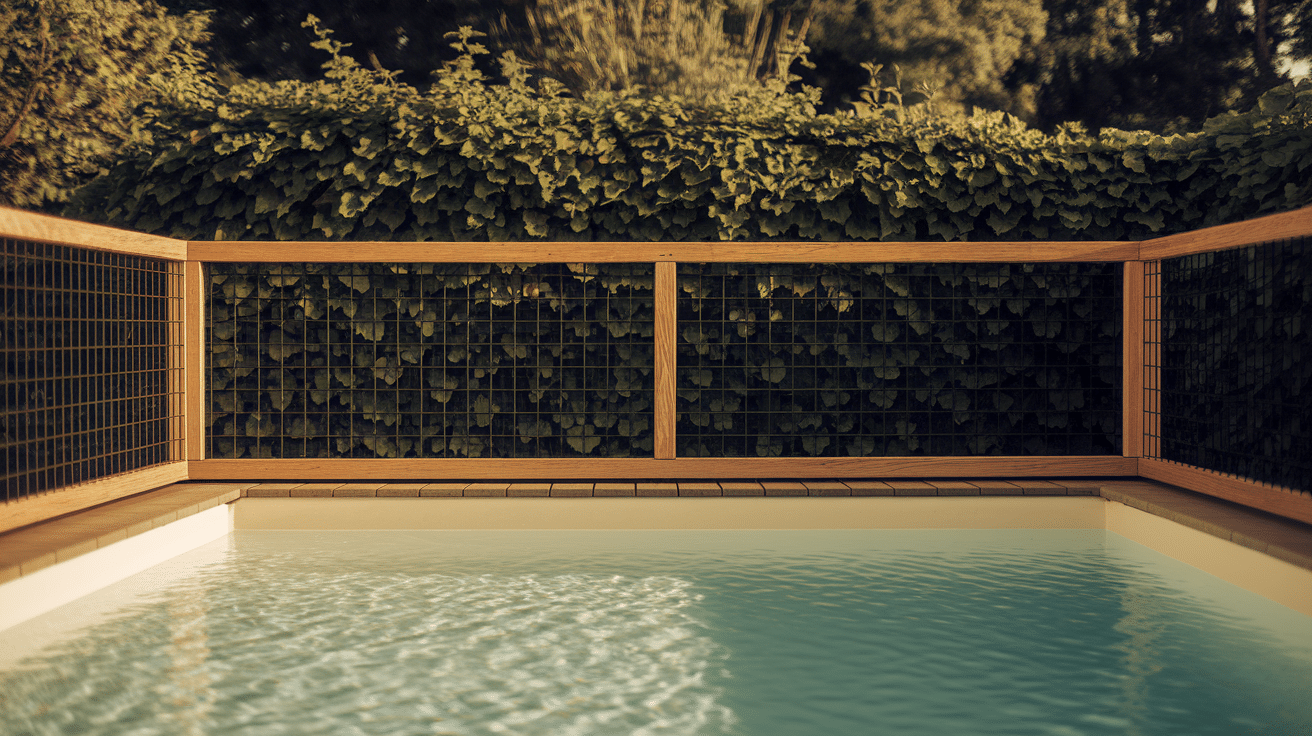
A simple wooden frame holds black wire mesh or hog panels for safety. The dark wire almost disappears when looking through it.
This fence keeps costs down while meeting safety rules. Paint the wire black to make it less visible from a distance and focus eyes on the wood.
Budget: $600-1,400 for basic setup
20. Whiskey Barrel Planter Posts
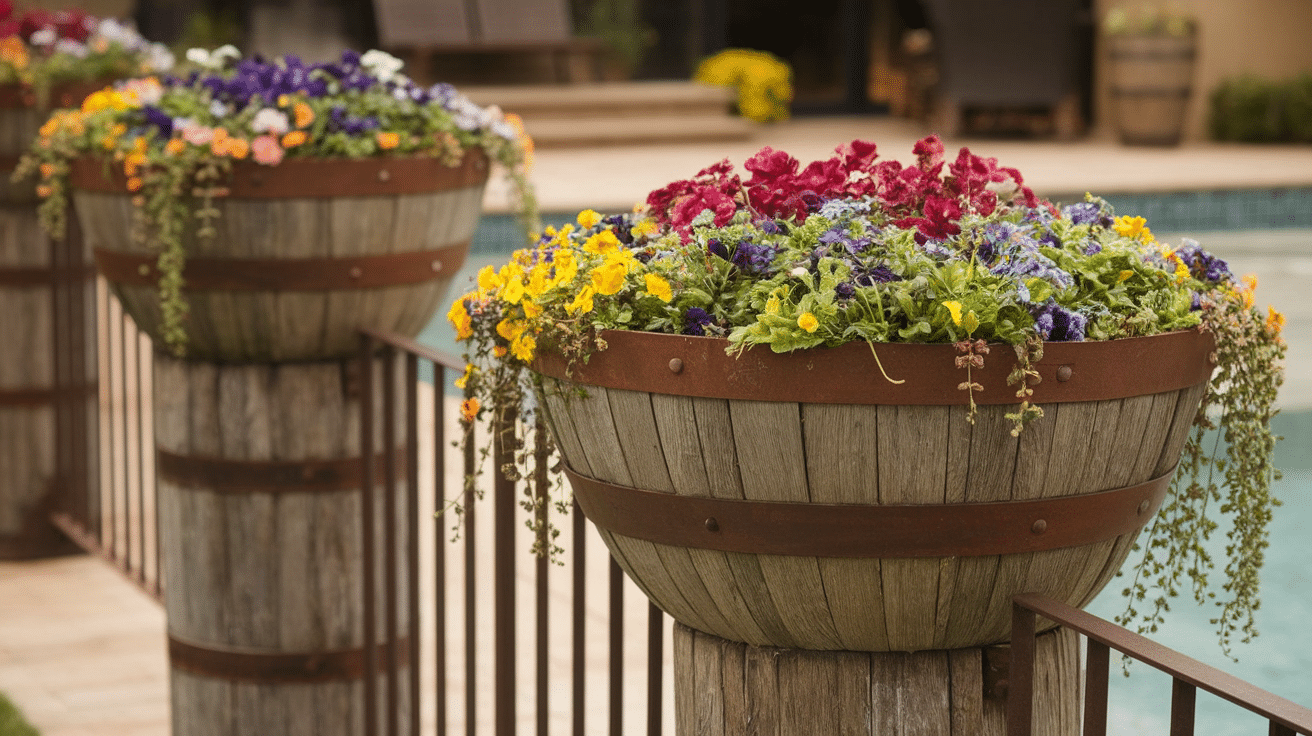
Cut whiskey barrels serve as posts with rails or panels between them. The posts can hold flowers for added color around your pool.
The wood is rich in color and has built-in weather protection. Fill barrels with concrete at the base for stability and with drainage holes for plants.
Budget: $1,200-2,400 for barrels and hardware
21. Log Slice Wall
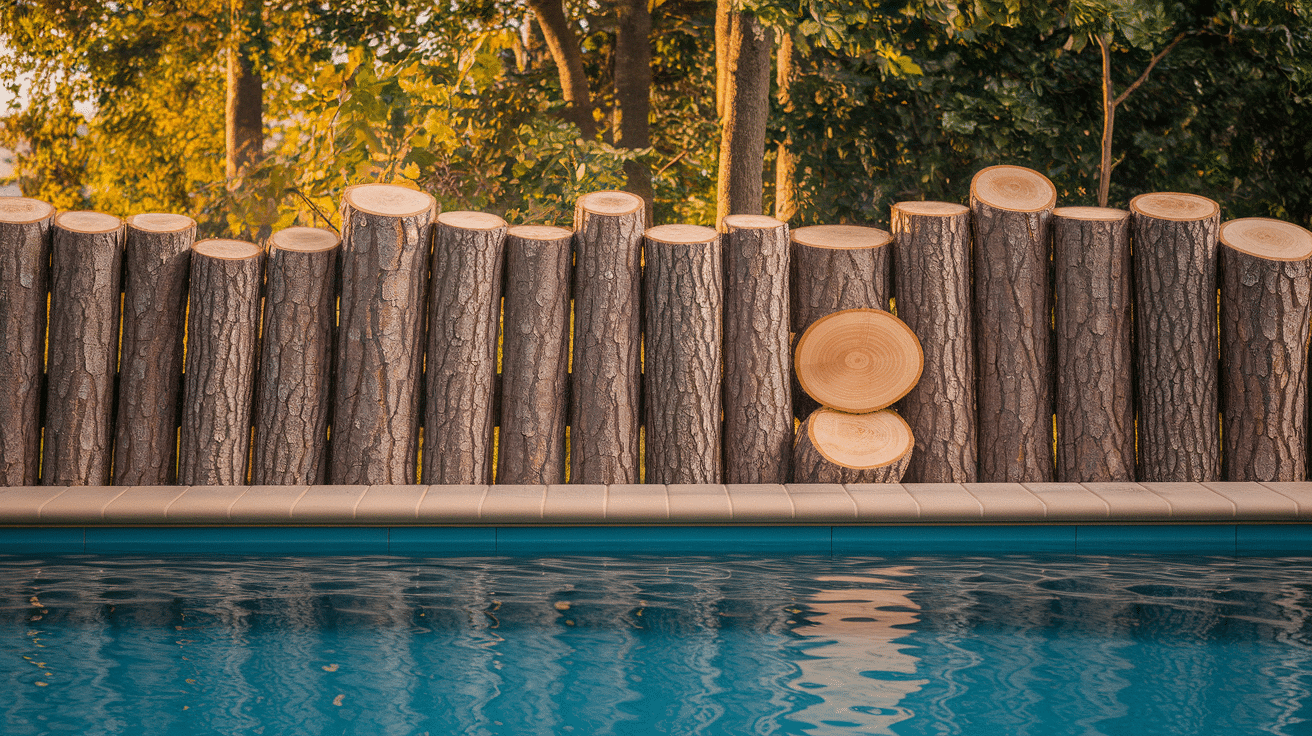
Vertical half-logs stand side by side to create a solid wall with natural edges. The fence shows off tree rings and bark edges for true rustic appeal. Seal well to prevent water damage near the pool.
Varying heights of logs create an uneven top line for added visual interest.
Budget: $1,800-3,200 for prepared logs
Certain Climate Considerations to Keep In Mind
When picking a rustic pool fence, consider the local weather. Different materials hold up better in certain climates.
Here are some key weather factors to keep in mind:
- Wet Areas: Places with lots of rain need fences that won’t rot. Cedar, treated pine, and stone work well. Wood needs yearly sealing to keep it from soaking up water and warping. Metal parts should be rust-proof.
- Hot Sun: Strong sunlight breaks down wood faster. Choose woods with natural oils like cedar, or use UV-blocking sealants. Light-colored woods stay cooler than dark ones. Some woods crack in dry heat.
- Snow Regions: Heavy snow can push fences over. Go with sturdy posts set deep in the ground. Stone bases help wood parts stay above snow level. Avoid designs that catch and hold snow weight.
- Salt Air: Near oceans, salt eats away at metal and some woods. Choose salt-resistant woods or seal often. Stainless steel hardware costs more but lasts much longer than regular screws and nails.
- Wind Zones: High-wind areas need solid construction. Avoid tall, solid fences that act like sails. Use space boards to let wind pass through or use fences with open designs. Deeper post holes add strength.
- Freeze Cycles: Places that freeze and thaw often need flexible fences. Stone set in mortar can crack during this cycle, and wood posts in concrete may heave up over time. Use gravel at post bases for drainage.
DIY vs. Professional Installation – Which One is Better?
| Aspect | DIY Installation | Professional Installation |
|---|---|---|
| Cost | Lower overall cost as you pay only for materials. Save $500–1,500 on labor. | Labor fees increase the total cost. Expect to pay $25–50 per hour or fixed project fees. |
| Time | Takes longer, often spans over several weekends. Your schedule controls the pace. | Faster completion, usually 1–3 days for an average pool. Work happens on set days. |
| Quality | Depends on your skill level. It may have slight flaws, but they can be fixed over time. | Higher standard with proper leveling and secure posts. Pros know small tricks for better results. |
| Tools | Need to buy or rent tools like post hole diggers, levels, and saws. | Professionals bring all the needed tools, saving you money on one-time tool purchases. |
| Permits | You must research and get all the needed local licenses yourself. | Many pros handle permit issues and know local codes for pool fences. |
| Warranty | No labor warranty, only warranties on the materials you buy. | Often includes a 1–5 year workmanship warranty plus material warranties. |

Conclusion
Rustic pool fences bring both safety and style to your outdoor space. The ideas shared here offer options for every home, budget, and climate.
Remember that the perfect fence balances good looks, safety rules, and practical needs. Consider your local weather, how much time you have for upkeep, and whether to hire help or build it yourself.
Whatever style you pick, proper care will keep it looking great year after year. Simple steps like regular sealing and quick fixes extend your fence’s life.
Ready to get started? Choose materials that match your home’s style and fit your budget.
Local building codes must come first, then personal taste.

